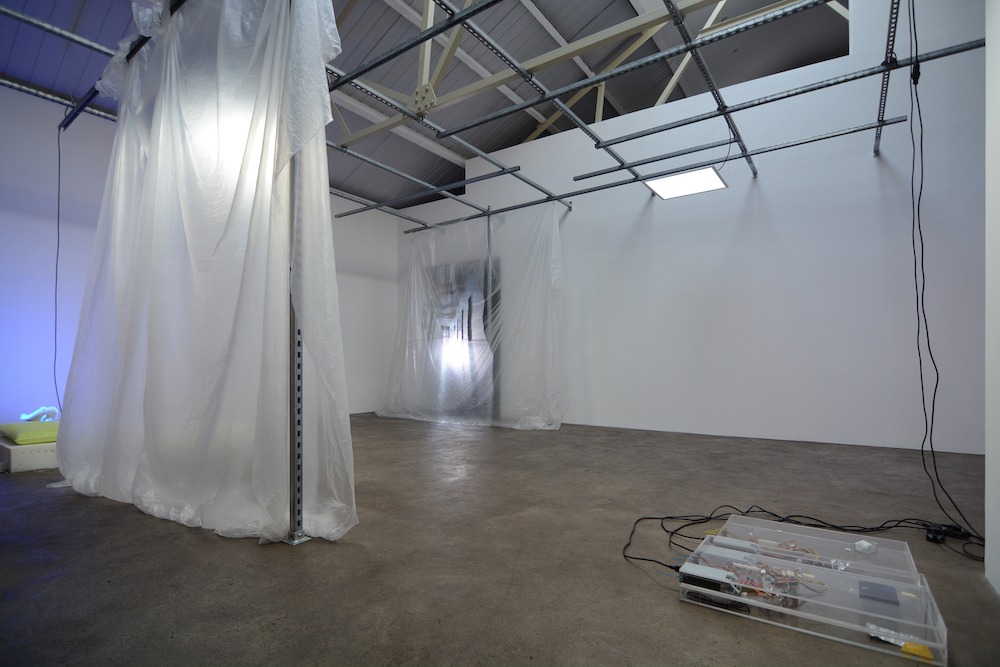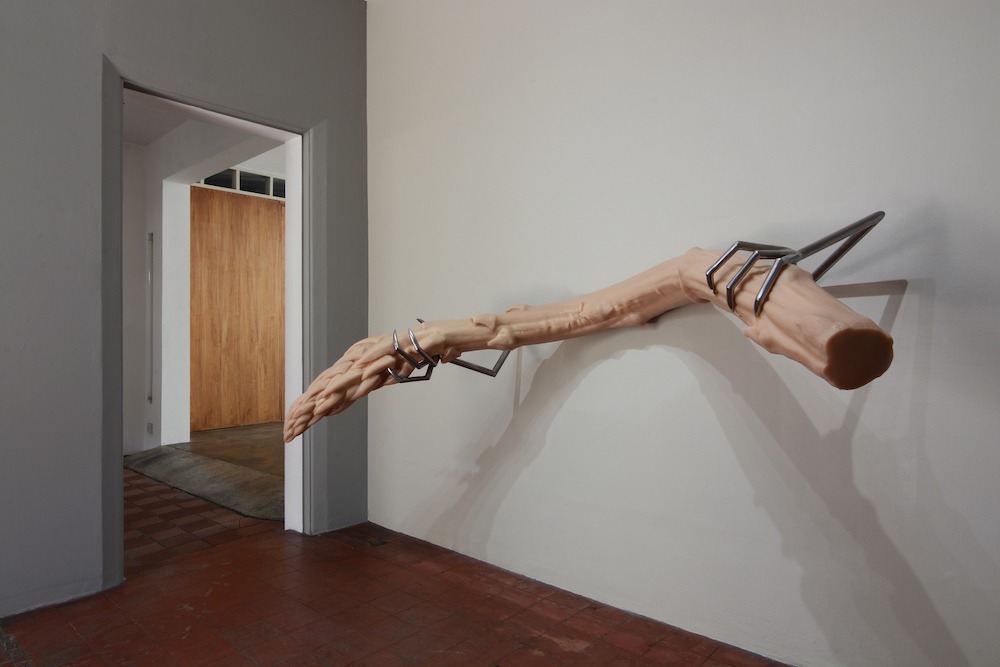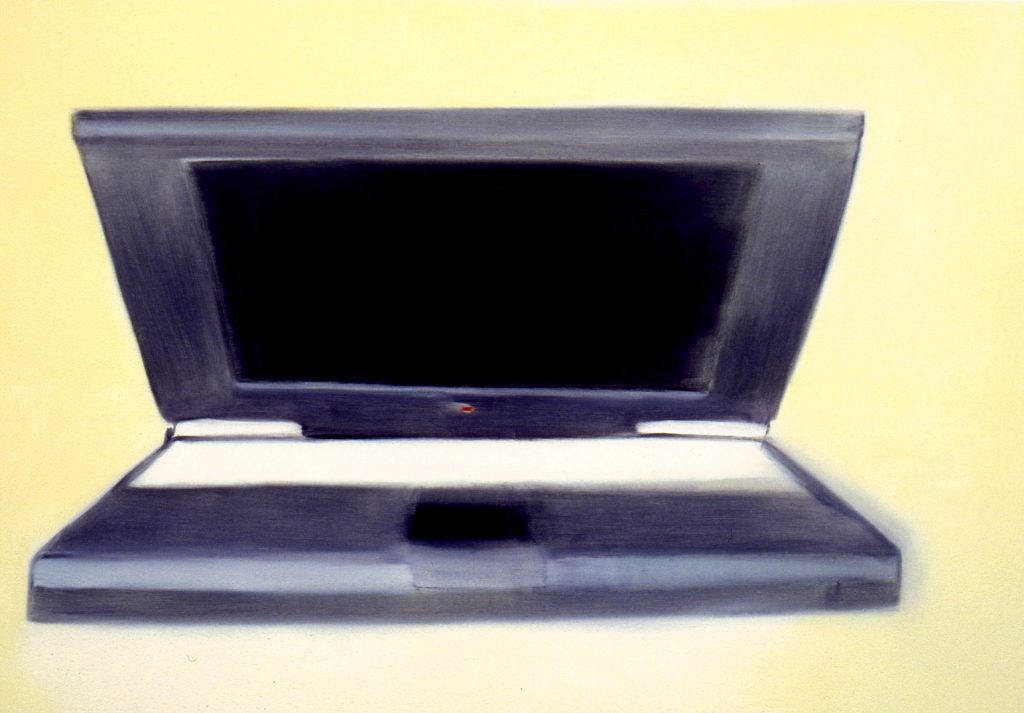From Eire to England: An Interview With mother’s tankstation Director Finola Jones

It was recently suggested, that all writing, particularly about art (such a small word), should be simultaneously as opaque as it is precisely clear…
Manifesto
David Godbold, mother’s tankstation limited
The first stroke in this artistic vision was painted 13 years ago in an old Guinness warehouse off the banks of the River Liffey in central Dublin. From the outside, the contemporary art gallery’s main hub in the Irish capital seems unremarkable, with its nondescript facade of off-white stucco adorned with a weather-worn moniker. The external simplicity belies the internal image of art that is brought to life against the blank canvas of the gallery’s inner walls.
In its first form, in 2006, mother’s tankstation limited was a speculative sketch of the path its founders thought could be forged within the world of art. This path was to put art at the centre of the business model – to let the art portray itself. It’s a model that’s worked and seen the artists’ space grow.
Today, the gallery has established itself as an internationally-renowned source of art with a reach that has expanded via a second hub in East London.
Finola Jones shares, in her own words, her past, present and future vision for mother’s tankstation.
Tell me the history of how mother’s tankstation limited came about.
When the gallery opened in 2006, I had been co-running a multiple-pathway MFA course in Dublin – practical, curatorial, theoretical. A visit to LISTE (Basel) inspired me to switch direction, consciously shifting pedagogy to practice, and created a showing space with an open, ‘alternative’ programme, which seemed to be missing from the Dublin scene at that point in history.
We were lucky enough to own a small, former factory building, which provided us with the physical context in which to build the idea of a ‘gallery’. Our first show was Nina Canell’s inspirational first solo exhibition. We woke up with energy; my ambition was to participate in LISTE as soon as we could, and then to access Art Basel. We got into LISTE on our first application, achieved ‘Statements’ at Art Basel four times – including Nina Canell winning the prestigious Baloise prize in 2009 – and we entered Art Basel ‘Galleries’ section last June.
What was your vision behind the gallery and how has it evolved in the years since?
The vision was always to base the programme more on the feel of a non-profit Kunstverein (in German, “art association”), putting practice before commerce and to grow from there. Surprisingly we quickly gained collectors internationally, based on the acceptance/expectation of our showing relatively complex art forms. This stays true, with artists like Yuri Pattison and Hannah Levy, who have joined us over the past years.
We have slowly, and slightly unexpectedly, collected a fantastic roster of great painters, but we always try to keep things in balance. For example, we have just started to work with the fascinating Jessie Homer French: a seventy-nine year young painter based in California, and counter-weighted this addition with Yuko Mohri: a Tokyo-based artist of rapidly-growing international repute, who specialises in complex, kinetic audio-driven installations.

Stealth Bomber/s
Installation view
mother’s tankstation | London 2019
Courtesy of the artist and mother’s tankstation, Dublin | London
How did you come to expand with a second gallery in London?
The easy answer is to say, that one has to move forward. Dublin has always been a relatively small scene and a London space seemed like a way to increase the audience for our programme beyond what people could experience from the levelling artifice of art fairs. We have always viewed mother’s tankstation as an international gallery that just happened to be located in Dublin. Now it’s an international gallery. Period.
The true test of any gallery (wherever it’s from) as an entity artistically, intellectually, historically, and philosophically is gauged by physically entering the reality of an actual gallery show. Art fair presentations, although a necessary and key tool of the contemporary art world, can be deeply misleading. So the new London venue over-doubles the potential of an audience seeing, experiencing, the ‘hard copy’ of what we do, on our own terms.
There is another slight subtext, in that our geographic location on an island – somewhat sandwiched between the populist politics of Brexit and the current U.S. administration – also necessitated an optimistic alternative. We considered various other centres to open a second space: Hong Kong, Paris, etc, but eventually settled on London which gives us potentially some creative room in various scenarios [that] could be crippling were we located in Ireland, alone.
What are the challenges associated with running a gallery in two different countries?
Time, principally. We are not finding it difficult to run parallel programmes. We have always felt that a shortage of ideas or energy, enthusiasm have never been issues for us, but the practicalities of time, budgets, shipping and staffing are the logistical challenges. The London venue is principally the daily responsibility of our Associate Director, which is a new, positive, and exciting dynamic for the gallery.

sunset provision
Installation view
mother’s tankstation | Dublin 2016
Courtesy of the artist and mother’s tankstation, Dublin | London
Elaborate on the message you wanted to portray with this first line in the gallery’s manifesto: “It was recently suggested, that all writing, particularly about art (such a small word), should be simultaneously as opaque as it is precisely clear.”
Yeah, that’s written by David Godbold, my partner in life and behind-the-scenes in the gallery, who is responsible for much of the text generation. His work frequently shifts from the “simultaneously opaque” to the “precisely clear”, but [it] is moderated by a sense of humour and the enjoyment of pure ‘readability’: i.e. readers seem to connect with his words.
What is intended is an experiential doorway, whereby – through inference – greater cultural references, atmospherics and nuance, a sense of the work we show is translated to the imagination of the reader. Bearing in mind the probability that many of them will not actually get to see an exhibition in person, but it provides an expanded meaning and context to an audience majority that will see work in a documentary form.
In the new London show, for example, Brendan Earley’s Elsewhere and Other Things: in its core elements, [it] is modestly substantiated by six drawings and four sculptures, but bound together by expansive ideas encapsulated in a compelling reading by Brian O’Doherty – broadcast into the space – of a classic J.J. Ballard science-fiction story. We wanted to create a connective mood between amassed ideas of time, futuristic-nostalgia, at the heart of utopian modernism, and the dialectical narratives inherent to science fiction, of hope and failure; the present of a past of something yet to become…
How accessible do you think art can and should be to wider audiences outside of the art world?
It’s crucial to bridge the gap, to create understanding of the often-complex. The experience and understanding of contemporary art for the viewer is strongly divided between professionals, cognoscenti and the lay or sometime-audience. It can be difficult, at times, to get a foothold into meaning or the intention of an artist. Art is rarely just what you see: this is why it’s imperative that there is always something to read contextualising an artist’s practice, and someone in the gallery intellectually and socially equipped to help guide one through. It hopefully makes the viewers’ experience of a show inherently more meaningful.

Panic Hardware
Installation view
mother’s tankstation | Dublin 2018
Courtesy of the artist and mother’s tankstation | Dublin
What are your current exhibitions on and what are some upcoming exhibitions of note at your two galleries?
We opened the new London space with a curated exhibition of Jessie Homer French’s Stealth Bombers: a particular body of work placed in context by a parallel, more expansive survey show of her remarkable paintings spanning from 1978-2018 installed in the Dublin space. Having the potential to spread a show over two venues emphasises the respect we hold for particularly important works.
As I mentioned, we have just opened the second show in the London space with Brendan Earley, a well-respected Irish artist, which will be followed by Aine McBride, an exciting young sculptor, from Donegal. The Dublin gallery will have a major show of new work by Yuko Mohri in September, and another London highlight will be the first solo show of the much-loved and respected Australian painter, Noel McKenna.








